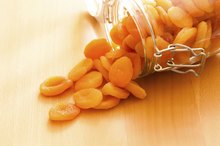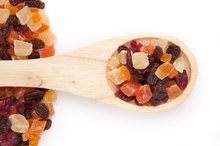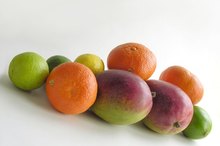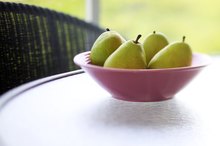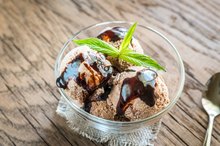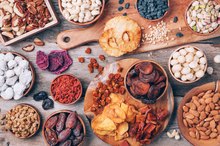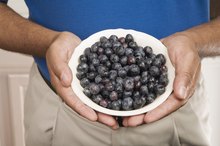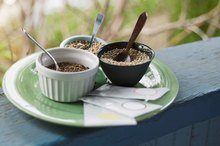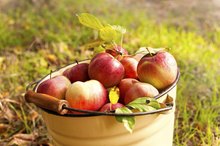Low-Sugar Fruits
It’s always a good idea to keep track of the sugar in your diet, but when you decide to cut down on the amount you eat, don’t start by eliminating fruit. First purge added sugar you might get from baked goods, candy and sodas. Then, if necessary, you can choose fruits with less sugar. In spite of their natural sugar, most fruits don’t affect blood glucose and are good sources of fiber and nutrients.
Deciphering Info About Sugar in Fruit
If you compare a few lists of low-sugar fruits, you may find conflicting information because there are two different ways to report sugar content. Some sources base their lists on sugar in a typical serving, while others list sugar content based on equal amounts of fruit. For example, by serving size, a medium orange has 12 grams of sugar, and a medium apple contains 19 grams. But if you compare an equal amount of 100 grams, they both contain about 10 grams of sugar. Because most people don’t weigh fruit before they eat it, it’s best to go with serving sizes.
Another potential source of confusion is the lack of an official definition for "low sugar." The U.S. Food and Drug Administration established guidelines for food manufacturers to follow when they want to label a product as low in calories, fat or salt, but the guidelines don't include low sugar. Using calories as an example, the FDA allows any food with 40 or fewer calories per the reference amount commonly consumed -- or serving size, as defined by the FDA -- to be labelled a low-calorie food. Without a similar definition for sugar, each list has its own cut-off point between low, medium and high amounts of sugar.
Fruits With the Least Sugar
What Fruits Are High in Dextrose?
Learn More
One teaspoon of granulated sugar equals 4 grams, so this list begins with fruits containing 1 to 4 grams of sugar. It’s too bad lemons and limes can’t be enjoyed out of hand because they have less sugar than most other fruits. You could eat an entire lime and gain a mere 1 gram of sugar, while a whole lemon has 2 grams. One-half cup of raw cranberries also has 2 grams. The downside is that lemons, limes and cranberries are so bitter that they’re usually sweetened and end up in high-sugar beverages or dishes. If you like to squeeze lemon or lime into your water, rest assured you're not adding sugar.
Avocados technically belong to the fruit family, which means they have a place on the list. One cup of avocado cubes or slices -- a little less than one whole fruit -- contains 1 gram of sugar. The last three fruits with the least sugar -- you could call them very low sugar -- are probably some of your favorite berries. Based on a 1/2-cup serving, raspberries contain 3 grams of sugar, blackberries have 3.5 grams and sliced strawberries come in at 4 grams.
Low-Sugar Fruits
You have quite a few fruits to choose from in the group that has 5 to 12 grams of sugar per serving. Just remember to pay attention to the serving sizes to be sure you consume about the same amount of sugar per fruit. This group starts with guava, which only has 5 grams of sugar in one piece of fruit. Fruits with 6 to 8 grams of sugar include papaya, kiwi fruit, blueberries, grapefruit and pineapples. The serving sizes are 1/2 cup of blueberries and pineapple, one kiwi fruit, and 1/2 of a papaya and grapefruit.
One medium nectarine, 1/2 cup of mango and 15 seedless grapes provide 11 grams of sugar. You can enjoy one medium peach or a medium-sized orange and get just 12 grams. One-half cup of cantaloupe delivers 6 grams of sugar, while a larger serving, such as one-fourth of a melon, has 10 grams. Watermelon gives a good example of why it’s so important to watch portions. A 1/2-cup serving of diced watermelon belongs in the low-sugar range because it contains 5 grams. Yet a more typical serving -- a wedge of melon -- doesn’t make the cut because it has 17 grams of sugar.
Fruits in the Moderate-Sugar Range
What Is the Percentage of Sugar in Dried Fruits?
Learn More
In the moderate-sugar category you’ll find fruits with 13 to 20 grams of sugar per serving. Fruits in the lower half of this range -- 13 to 16 grams -- include bananas and sweet and sour cherries, while prunes, apples and dried figs have 17 to 20 grams. The serving sizes used are a medium-sized banana and apple, 1 cup of cherries and five dried figs or prunes. It's easy to see that you can still enjoy all of the fruits by going with a smaller portion. You could also include raisins in this group because 1/4 cup of seedless raisins only has 21 grams.
Related Articles
References
Writer Bio
Sandi Busch received a Bachelor of Arts in psychology, then pursued training in nursing and nutrition. She taught families to plan and prepare special diets, worked as a therapeutic support specialist, and now writes about her favorite topics – nutrition, food, families and parenting – for hospitals and trade magazines.

